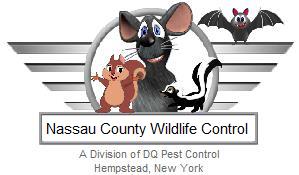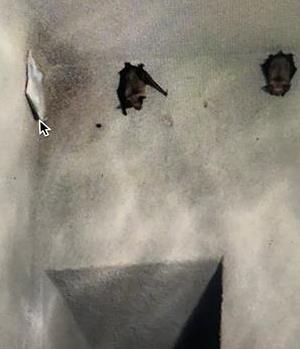Bats In The Attic Nassau County, Long Island, New York
The Little Brown Bat and the Big Brown Bat are the most commonly encountered bats by Nassau County, Long Island residents. The Little Brown Bat and Big Brown Bat are referred to as house bats, because these cave bats find their way into Nassau County homes and roost in attics and chimneys. The Big Brown Bats have a body length of 4 to 5 inches, which is more than twice the size of the Little Brown Bat. The Big Brown Bat has a wider nose compared to that of the Little Brown Bat. The Big Brown Bat has long and silky fur that is chocolate brown in color. The Little Brown Bat's fur is uniformly dark brown in color and glossy on the back with slightly grayish fur underneath. Big Brown Bats have thirty-two adult teeth and Little Brown Bats have thirty-eight adult teeth. The Big Brown Bat's ears are black, short and have rounded tips whereas Little Brown Bats, which are referred to as mouse-eared bats, have short, blunt-tipped tragus in their ears. Female bats will form nursery roosts in the attics of Nassau County, Long Island residences, with several female bats giving birth in the same area. The average life expectancy of these bats is 6.5 years, but they can reach more than twenty years of age. Giving birth to one pup in June, or early July bats are one of the slowest reproducing mammals. Newborn bat pups are dependent on their mother for nourishment. Little Brown Bat pups can fly at approximately three weeks of age, after which they feed on both their mother's milk and insects. The Little Brown Bat is weaned from its mother's milk when it is about twenty-six days old. The pups of the Big Brown Bats are able to fly at about four to six weeks of age. Once weaned, the Big Brown Bat pups will leave the attic in search of beetles for nourishment. Other bat insect prey would include wasps, flying ants, flies, and mosquitoes.





